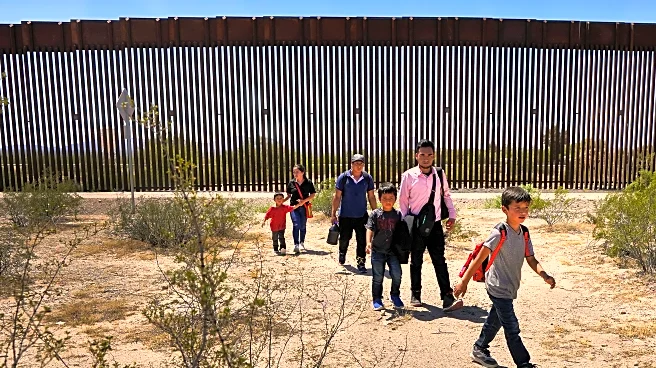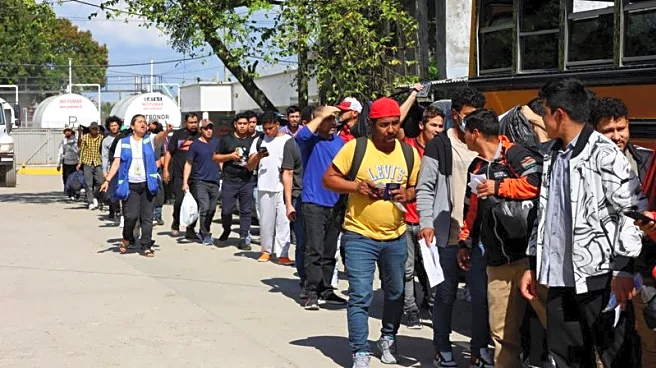What's Happening?
The Trump administration has decided to terminate the Temporary Protected Status (TPS) for Hondurans, effective September 8, affecting many immigrants working in the U.S. health care sector. Aurora, a Honduran immigrant who has been working in Los Angeles as a caregiver for the elderly, is among those impacted. TPS was initially granted to Hondurans following Hurricane Mitch in 1998, allowing them to live and work legally in the U.S. The decision to end TPS is part of a broader move by the administration to terminate programs that provide temporary refuge to immigrants, citing national security concerns. The termination is being challenged in court, but a recent ruling by the 9th Circuit Court of Appeals has allowed the administration to proceed while litigation continues.
Why It's Important?
The termination of TPS for Hondurans could significantly impact the U.S. health care industry, particularly in states like California, where immigrants make up a large portion of the workforce caring for the elderly and disabled. The California Health Care Foundation reports that nearly half of the state's direct care workforce are immigrants, and the state could face a shortage of up to 3.2 million care workers by 2030. The decision has raised concerns about the potential loss of essential workers in a sector already experiencing shortages. Additionally, the move has sparked debates about immigration policy and the need for pathways to citizenship for long-term residents contributing to critical sectors.
What's Next?
As the September 8 deadline approaches, affected individuals like Aurora face uncertainty about their future in the U.S. The Service Employees International Union Local 2015 is advocating for legislative solutions to provide a path to citizenship for immigrants in the care sector. Meanwhile, the legal battle over the termination of TPS continues, with potential implications for other immigrant groups under similar protections. The outcome of this case could influence future immigration policies and the stability of the U.S. health care workforce.













